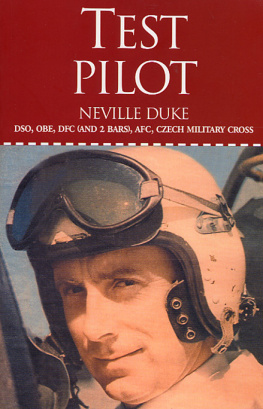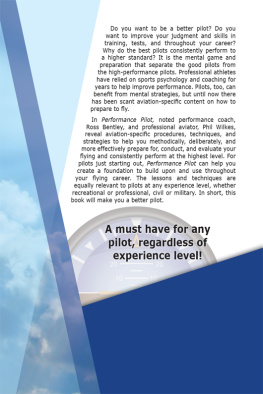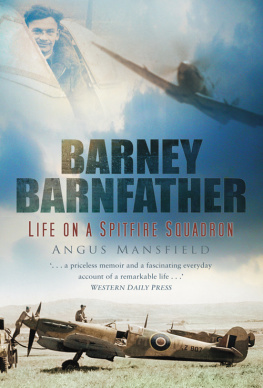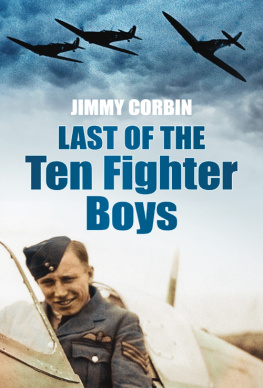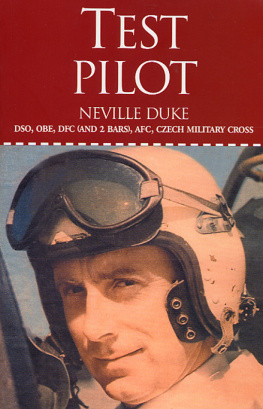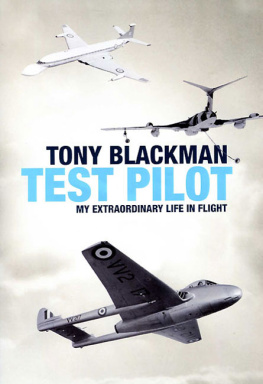
The name of Neville Duke is well-known in aviation circles, not only as a successful wartime fighter pilot, but also as a peacetime test pilot with the Hawker Aviation Company.
Joining the RAF at the beginning of the war, he found himself as a young fighter pilot with the crack 92 Squadron at RAF Biggin Hill, in 1941. That spring and summer he survived the air battles over Northern France with the Biggin Hill Wing, often flying as wingman to the legendary Sailor MalanFighter Commands top-scoring pilot at that time. In those months he learnt the fighter pilots trade, lessons that were to prove invaluable when, in November, he was posted to a very different air war in the Western Desert.
Flying the famous Shark Mouthed P40E Tomahawk fighters, he quickly established himself as one of the most successful pilots in North Africa, winning the DFC and bar. By 1943 he was flight commander with his old 92 Squadron, which had also become part of the Desert Air Force.
Again flying Spitfires, he brought his score to twenty-one by the end of the Tunisian Campaign, was awarded the DSO, then given command of 145 Spitfire Squadron in Italy. Leading this unit in the summer of 1944 he brought his score to twenty-eight, receiving a second bar to his DFC.
Towards the end of the war he became an RAF test pilot and later a member of the RAFs High Speed Flight. This was the start of a successful career as a test pilot after leaving the Service in 1948, having been awarded the AFC. Working for Hawkers, he became Chief Test Pilot and did all the major flight development on one of the most famous of all RAF peacetime aircraftthe Hawker Hunter, and with it took the world speed record in 1953.
Injured in a Hunter crash two years later, he was forced to leave Hawkers but continued to fly and later set up his own test flying business, as well as becoming the personal pilot of Sir George Dowty. He worked for years as a freelance and highly respected test pilot, flying the Optica, Fieldmaster and Firemaster aeroplanes. He still flies his own plane.
First published in 1953
This edition first published in hardback in 1992 by
Grub Street
The Basement
10 Chivalry Road
London SW11 1HT
Reprinted in paperback in 1997
Copyright this edition 2003 Grub Street, London
Text Neville Duke
Reprinted 2006, 2010
A catalogue record for this book is available from the British Library
ISBN 1 904010 40 7
eISBN 978 1 909166 77 6
All rights reserved. No part of this publication may be reproduced, stored in a retrieval system, or transmitted in any form or by any means, electronic, mechanical, photocopying, recording, or otherwise, without the prior permission of the copyright publisher.
Typeset by Rowan Typesetters, Birchington, Kent
Printed and bound in Great Britain by
MPG Books Ltd, Bodmin, Cornwall
With thanks to Norman Franks
TEST PILOT was first published in 1953. This new edition is reprinted exactly as that edition but with an additional chapter covering Neville Dukes flying life from that date, and also has appendices and index. not included in the earlier book, together with a completely new selection of photographs.
Cover photos show Neville Duke on the day he set the 100km closed circuit record, 19 September 1953. The front cover image is supplied courtesy of Brian Isles, and thanks to him.
Cover design by Hugh Adams at AB3
To all my Fellow Pilots
of the War years
and today.
Contents
List of Illustrations
Introduction
DURING the clear, sunny afternoon of 6th September, 1952 many thousands of spectators at the annual display of the Society of British Aircraft Constructors peered into the sky above Farnborough aerodrome, their eyes seeking the DH 110, a twin-tailed fighter aircraft with swept wings, flown by John Derry, test pilot of the De Havilland Aircraft Company. With Anthony Richards as his observer, Derry dived from a height of over 40,000 feet towards Farnborough, causing sonic explosions like rumbling gunfire. As the echoes died, the DH 110 swept low over the aerodrome to begin an aerobatic display.
Suddenly, the crowds admiration changed to horror. Without warning the aircraft broke up, littering the sky with drifting wreckage; its cockpit fell on to the runway, and its two engines hurtled through the air like shells into a section of the spectators.
In that tense atmosphere, while the injured and the dead were yet uncounted and the ruin of the DH 110 was still being cleared from the runway, Neville Duke, chief test pilot of the Hawker Aircraft Company, took off in the sleek, graceful Hawker Hunter. He was watched in silence, all eyes seeking his return. He dived, causing sonic explosions, and reproduced the perfect exhibition of flying he had given during the earlier days of the display.
Men and women, while biting on the thought that his aircraft, too, might break up, felt their hearts lift to his cool nerve and example, wondering in their minds what his thoughts might be at that moment.
The news of the accident, and of Neville Dukes immediate flight, went out to the world, and sorrow was mingled with admiration. Among the millions who read and heard the news, one sat down to pen a notethe Prime Minister, Sir Winston Churchill. We have Sir Winstons permission to quote it. My dear Duke, he wrote, It was characteristic of you, and of 615 Squadron, to go up yesterday after the shocking accident. Accept my salute.
The next day while the accident and its possible causes were still being widely discussed, Neville Duke again took up the Hunter, producing sonic explosions in cloud, and performing aerobatics over the spot where Derry and Richards had crashed. He flew brilliantly.
These incidents, and general interest in supersonic flying by test pilots, concentrated attention on Neville Duke. This book, a story of his career and experiences, is a result of that attention.
There are one or two things I should like to say. Neville had to be persuaded to tell his story; he did so reluctantly. If there should be a suspicion that he line shoots then I alone am to blame. But if you should find interest and pleasure in this book, then the credit must go to Neville Duke. For it is his story. His experiences during the last war are drawn from his own war diaries, several passages being quoted verbatim.
Flying, the thrill and joy of it, have been and are his life. He regards success and renown as being incidental. For him aircraft are machines that come to life while he flies them; and he flies with enthusiasm, part boyish, part the mature aviator. He is a superlative pilot who looks always ahead to the future, and he works hard and seriously.
When his test flying days are ended let us expect there will be found for him a niche in aviation where the deep well of his experience and knowledge may be drawn upon for many years to come.
Alan W Mitchell
Westhumble,
Dorking, Surrey.
CHAPTER 1
Through the Hatch!
I DISCOVERED that I had flown faster than sound for the first time when I went into my office in the control tower of Hawkers airfield at Dunsfold one morning.
It is a comfortable office, with cream walls, a fawn carpet, a roomy desk and chair, and with photographs of aircraft here and there. An adjoining office is used by four more of Hawkers test pilotsFrank Murphy, Frank Bullen, Bill Bedford, and Donald Lucey.
I popped my head through a hatch-way in the wall. Frank Bullen was sitting at his desk, puffing away contentedly at his pipe.
Morning, Frank, I said.
He removed his pipe, gave me a large smile, and replied, Morning, Nev. Quite a good one yesterday, eh?
Next page
